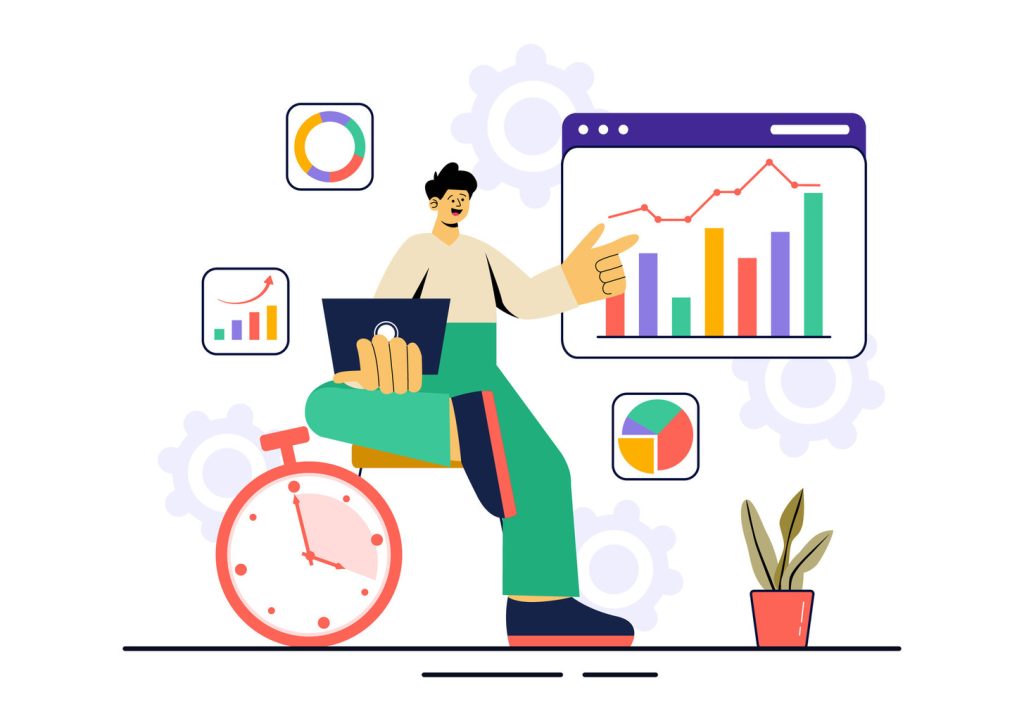Multichannel Survey Distribution: Top Techniques for Success

Businesses today struggle to gather insights from teams and customers spread across locations, roles, and communication preferences. Traditional email-based approaches miss critical audiences – particularly frontline workers in industries like manufacturing and retail who lack regular computer access. This gap creates unreliable data and limits growth opportunities.
Modern organizations need adaptive solutions that meet people where they work. Tools like SurveyMonkey help design questionnaires, but delivering them effectively requires deeper strategy. Companies must blend digital and physical channels – mobile apps, QR codes, SMS links, and onsite tablets – to capture diverse perspectives.
Well-executed outreach boosts participation rates by 40-60% compared to single-method systems. It also improves data accuracy by representing all workforce segments equally. Leaders who master this balance see faster decision-making and stronger customer relationships through actionable insights.
Key Takeaways
- Frontline employees in hands-on industries often get excluded from traditional feedback methods
- Combining digital and physical channels increases response rates and data diversity
- Mobile-friendly formats work best for workers without desk access
- Strategic delivery methods improve data quality and decision speed
- Higher participation correlates with improved customer satisfaction metrics
Introduction to Multichannel Survey Distribution
Effective feedback collection begins long before questions reach recipients. How organizations deliver questionnaires shapes participation rates and data accuracy. Strategic delivery bridges gaps between companies and their audiences, ensuring insights reflect real-world experiences.
Why Survey Distribution Matters
Misaligned delivery methods create unreliable results. A retail chain using only email misses 63% of store associates without corporate accounts. This oversight distorts employee sentiment analysis and hampers operational improvements.
Proper techniques boost response quality. When surveys arrive through preferred channels, participants provide detailed answers. For example, healthcare workers respond 3x faster via SMS than email during shifts.
An Overview of Top Techniques
Leading organizations blend traditional and digital approaches:
| Method | Reach | Avg. Response Rate | Best For |
|---|---|---|---|
| In-app notifications | Mobile users | 34% | Ongoing customer feedback |
| QR codes | Onsite teams | 41% | Manufacturing floor input |
| SMS links | Non-desk workers | 38% | Retail staff insights |
| Email campaigns | Office employees | 22% | Detailed policy feedback |
Timing and channel selection drive success. A logistics company increased driver participation by 55% using brief voice surveys during delivery routes. This approach respected workers’ limited screen access while capturing critical safety feedback.
Overcoming the Challenges of Reaching Diverse Respondents

Frontline employees power essential industries but remain unheard through conventional feedback channels. Retail associates, healthcare technicians, and manufacturing teams often operate without corporate email accounts or computer access – yet their insights drive operational success.
Addressing Non-Desk Worker Barriers
Traditional email-based systems exclude 83% of essential workers in hands-on roles. This creates critical blind spots in organizational data. Industries like hospitality and logistics face particular hurdles:
- Shift workers lack time for lengthy questionnaires
- Field teams need mobile-first formats
- Manufacturing staff require on-site access points
Progressive companies now deploy SMS-based surveys and QR code stations in break rooms. A Midwest hospital chain achieved 89% participation from nurses using 3-question pulse checks via secure messaging apps.
Bridging Communication Gaps in the Workplace
Disconnected teams cost U.S. businesses $1.7 trillion annually in productivity losses. “When warehouse staff can’t share safety concerns easily, accidents increase,” notes operations manager Lauren Torres. Smart solutions include:
- Voice-to-text surveys for drivers
- Tablet kiosks near production lines
- Manager-led check-ins during shifts
These approaches reduce turnover by 28% in service industries while capturing real-time operational feedback. The key lies in matching tools to employees’ workflows rather than forcing desk-based methods.
Diverse Survey Distribution Methods Across Channels
Choosing the right mix of delivery methods directly impacts response quality and participation. Organizations must balance speed, accessibility, and resource allocation when gathering input from varied teams.
Traditional vs. Digital Approaches
Paper-based questionnaires and phone interviews create personal connections but drain time and budgets. A restaurant chain spending 80 hours monthly on manual data entry switched to digital tools, cutting processing time by 65%.
Digital channels scale efficiently but require strategic planning. While email reaches desk workers quickly, 121 daily messages per office employee cause critical requests to get buried. Teams using chat platforms like Microsoft Teams see 47% faster responses than email-only users.
Leveraging Multiple Communication Tools
Text messaging eliminates location barriers with 90% open rates within three minutes. Construction firms using SMS links achieve 72% participation from field crews – triple their previous email results.
- QR codes on breakroom posters enable instant mobile access
- Hybrid models combine tablet kiosks for factory staff with email for managers
- Brief voice surveys capture driver feedback during delivery routes
“Blending methods respects how different teams operate,” explains HR tech lead Mark Sullivan. A healthcare network boosted nurse participation by 89% using secure app-based polls during shift changes.
Multichannel Survey Distribution: Expert Strategies for High Response Rates

Cutting response rates require more than sending questionnaires. Organizations achieve superior results by blending psychological insights with tactical precision. A hospitality group increased participation by 73% using three core principles: relevance, convenience, and recognition.
Human-Centric Outreach
Personalized invitations outperform generic requests. Adding names and role-specific context boosts completion rates by 8.6 points. “Workers engage when they feel recognized,” notes HR strategist Alicia Nguyen. Her team doubled retail staff feedback using:
- Location-based incentives like shift meal credits
- Mobile-friendly formats matching break schedules
- Manager voice memos explaining survey purposes
Rewards drive action without compromising authenticity. A 19% participation jump occurred when a logistics firm offered safety gear upgrades for driver feedback.
Precision Timing Tactics
Seventy percent of SMS-based responses arrive within 60 minutes. Smart scheduling tools analyze shift patterns to deliver requests during natural pauses. Nurses complete 83% of polls sent 30 minutes before shift changes rather than during patient care hours.
Advanced platforms segment audiences automatically. Office staff receive email links on Mondays, while field crews get SMS prompts during travel windows. This strategy lifted response rates to 61% for a construction company – triple industry averages.
Enhancing Feedback Collection Through Integrated Channels
Smart organizations achieve superior results by combining communication tools strategically. Blending SMS and email creates a feedback loop that respects recipient preferences while maximizing data quality. This approach addresses varying work patterns and tech access points across teams.
Maximizing Engagement with SMS and Email
SMS surveys deliver unmatched immediacy. With 98% open rates and 70% completion within one hour, they capture real-time insights from mobile-focused users. Field technicians and retail staff often prefer this method during shifts.
| Channel | Strength | Response Window | Best Use Case |
|---|---|---|---|
| SMS | Instant access | 1 hour avg. | Shift workers, urgent issues |
| Detailed context | 24-48 hours | Policy feedback, B2B outreach |
Email remains essential for B2B feedback collection. 99% of companies use it for detailed questionnaires due to existing workflows. Combining both channels yields 25-40% higher response rates than single-method systems.
Advanced platforms automate channel selection based on user behavior. A healthcare provider increased nurse participation by 62% using SMS reminders after email invitations. Timing coordination prevents message overload while maintaining consistent branding.
Key integration principles:
- Launch email campaigns for complex surveys
- Trigger SMS follow-ups after 24-hour non-response
- Align messaging tone across platforms
Leveraging Technology for Real-Time Feedback and Analysis

Modern organizations gain competitive edges by analyzing feedback the moment it’s submitted. Advanced platforms now merge instant data capture with intelligent processing, turning raw input into actionable insights faster than manual methods allow.
Automated Data Collection Benefits
Systems that capture real-time feedback eliminate delays between submission and analysis. A retail chain reduced decision lag from 14 days to 6 hours using automated processing. Key advantages include:
- Instant error detection during data entry
- Compliance-ready audit trails updated continuously
- In-app survey tools triggering context-specific questions
These systems maintain 99.8% data accuracy compared to manual methods’ 82% average. Managers access dashboards showing live response rates and emerging trends across locations.
Cross-Channel Data Verification
Matching feedback patterns across SMS, email, and in-app channels identifies inconsistencies. A logistics firm found 19% of safety reports differed between methods – resolved through follow-up checks.
| Verification Method | Purpose | Impact |
|---|---|---|
| Time-stamp analysis | Confirm response timing | Reduces duplicate entries by 37% |
| IP/device tracking | Prevent fraudulent inputs | Improves data credibility by 28% |
| Cross-platform matching | Ensure answer consistency | Boosts actionable insights by 41% |
Live dashboards highlight discrepancies while campaigns still run. Teams adjust outreach strategies immediately – like adding QR codes when mobile response rates drop below thresholds.
Best Practices in Survey Design and Delivery
Crafting impactful feedback tools requires equal parts strategy and empathy. Thoughtful construction ensures participants provide meaningful insights without feeling overwhelmed – a balance that drives both response quality and completion rates.
Designing User-Friendly Surveys
Clarity trumps complexity in effective survey design. Limit questions to six or fewer, focusing on critical drivers like customer goals and improvement opportunities. A retail chain improved completion rates by 33% using simple yes/no follow-ups after Net Promoter Score queries.
Phrasing matters as much as length. Avoid leading language like “How satisfied were you with our excellent service?” Instead, ask “How would you rate your experience?” This neutral approach yields 19% more actionable responses according to CX researchers.
Optimizing for Mobile and Multiple Devices
With 72% of frontline workers using smartphones for work tasks, mobile-first design is non-negotiable. Responsive formats automatically adjust button sizes and text spacing across screens. A logistics company reduced drop-off rates by 41% using scroll-friendly single-question pages.
Platforms like SurveyMonkey offer built-in mobile optimization, but testing remains crucial. Always preview how questions appear on older devices common in field roles. Tablet kiosks in manufacturing break rooms should display large touch targets – at least 48×48 pixels for gloved hands.
Strategic timing complements technical execution. Quarterly relationship surveys maintain fresh insights without overwhelming participants – companies using this rhythm see 6% higher retention than annual pollers. The sweet spot lies in respecting people’s time while gathering decision-ready data.

